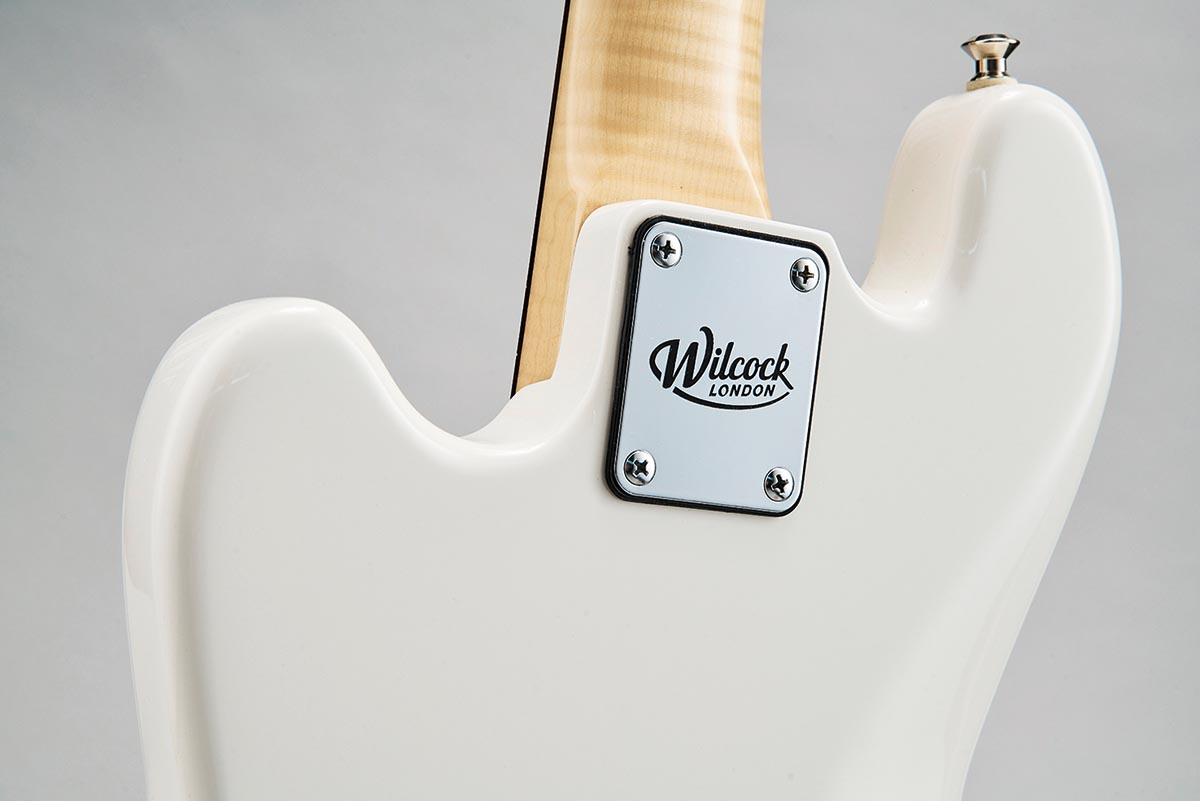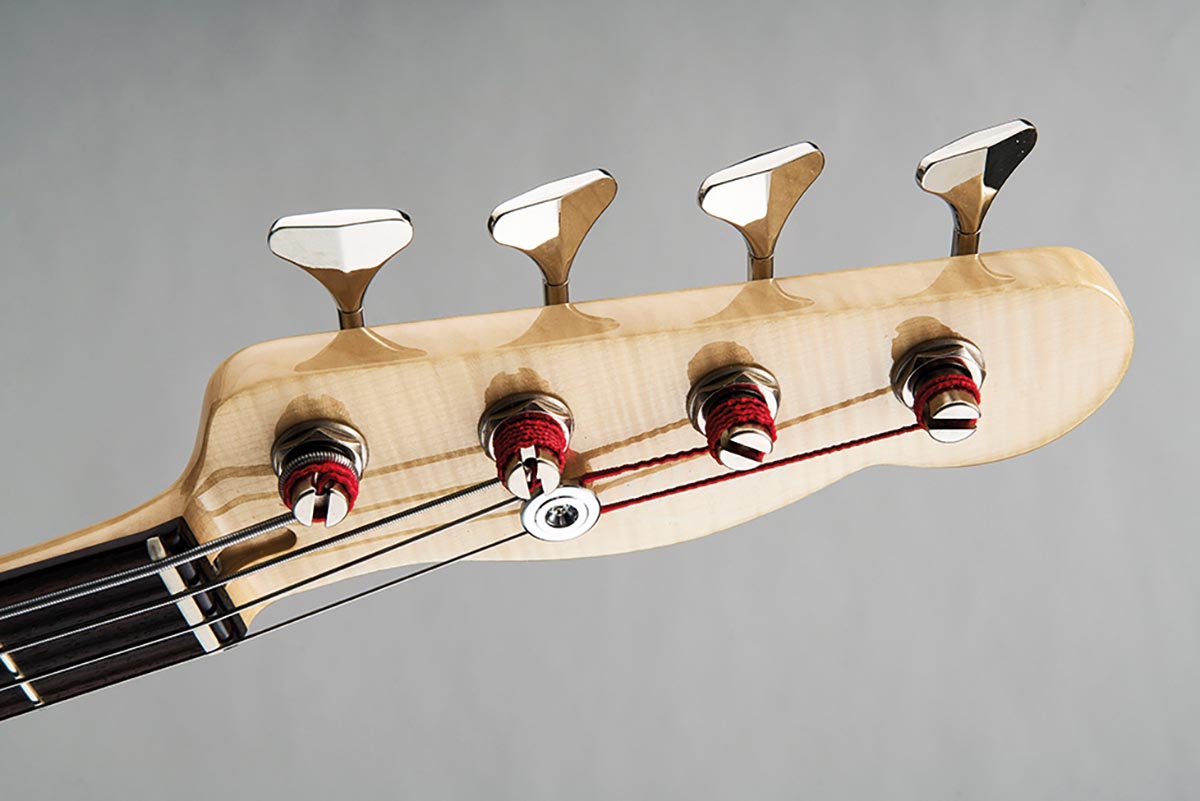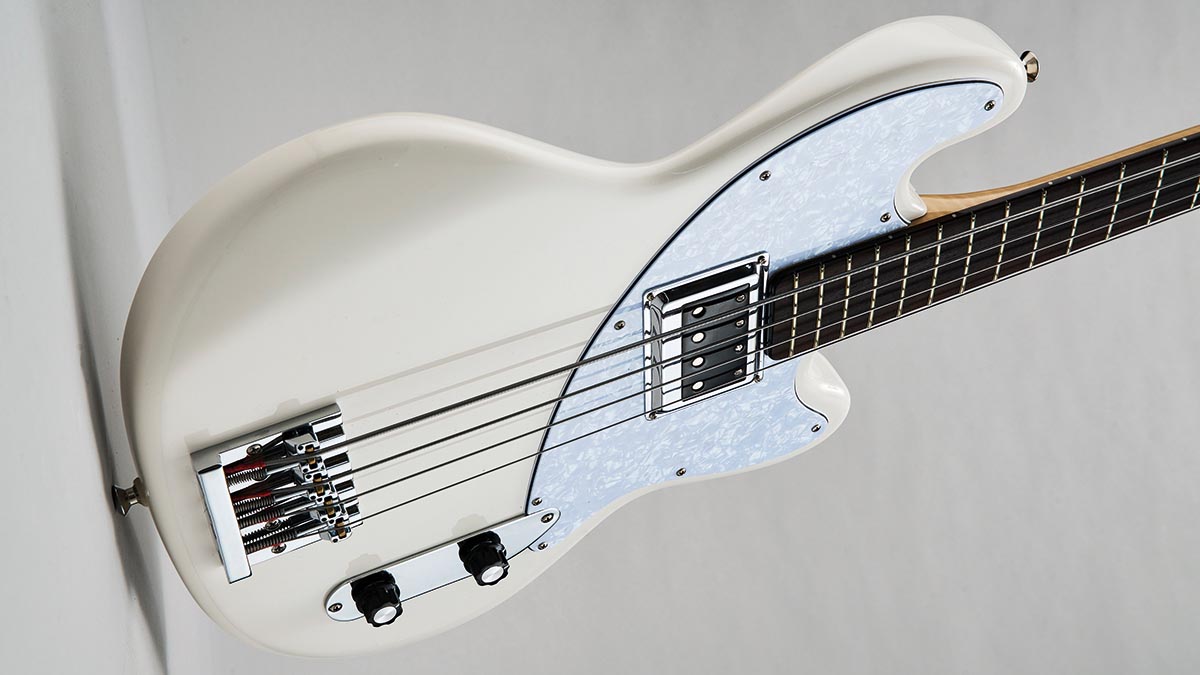Guitar World Verdict
Pricey but impressive, the BiSonic is a supremely playable short-scale with some deep and plummy old-school warmth.
Pros
- +
Simplicity.
- +
Build quality.
- +
Playability.
Cons
- -
Limited tonally.
You can trust Guitar World
Wilcock Basses have been building up a head of steam recently, with some familiar names taking their instruments to heart and achieving very impressive sonic results. The moment we open this BiSonic’s case, it’s clear that a great deal of love and attention has gone into its construction.
As it’s equipped with Thomastik Infeld flatwound strings, and features a short scale length, we predict that the tones on offer are likely to be of the ‘rounded’ and ‘thick’ variety. Are we right?
Build Quality
Plucked from its hardshell case, the BiSonic feels solid, well-balanced and not especially heavy, all of which are good signs. Weighing in at eight pounds, this is not a bass guitar with balance issues, and there are no headstock bias considerations to contend with.
Whether you’re playing it sitting down or standing up, the bass sits perfectly against your body. Front and rear contouring afford the player plenty of comfort, while the well-proportioned curves and slender upper and lower horns imply an effort-free physicality to the instrument.

The flame maple neck is eye-catching, continued across the front facing of the headstock. This clean, simple visual is continued across the 20-fret Indian rosewood fingerboard, with no position markers on display, although white side markers have been used along the side of the neck. The neck profile is a sleek C- and D-shaped hybrid: after five minutes of playing it, you will be in love with it, such is the attention afforded to the construction.
Chrome Hipshot hardware has been used throughout, and along with the three-ply white pearloid scratchplate, Olympic White gloss finish and single Curtis Novak BiSonic pickup, this bass has a tangible air of simplicity. With a master volume control and a push/pull tone control to access the pickup’s coil tap, there isn’t much to worry about when it comes to dialing in your sounds.
Sounds And Playability
Fitted with flatwounds, the tone is more rounded and hefty, but the shorter scale length instills a suppleness into the string response. String bending is a little easier and zipping across the neck is a whole lot faster than it would be on a standard-scale bass. Unplugged, the natural tone is reminiscent of a Hofner – it’s very '60s-influenced, with a full, clear sound.
Plugged in, the BiSonic produces a fat, earthy tone, almost sounding like an upright at times: the lower frequencies have minimal attack when a note is played, before blooming to achieve their full effect.
Classic, plummy bass tones are readily available, and thankfully, both controls work across the whole of the pot turn – the tone control offers plenty of discernible light and shade. The pickup response can be changed by activating the push/pull facility on the tone control and selecting each setting: you’ll instantly hear the difference between both options.

The standard setting offers a straightahead bass tone, well-defined with a low-mid thump and a smooth low end that sits well with the well-defined highs.
Activating the pulled setting provides a very noticeable increase in low-end content; thankfully, it doesn’t drown out the instrument’s sound. Instead, it provides some additional power to the tone, creating a hefty signal with considerable bass response. Pick players will no doubt move towards this setting as it works well with the attack that a pick provides, while dub and reggae players will also be impressed by the sonic possibilities.
The bass feels very smooth in its design and execution – the human, handmade nature of the BiSonic should not be underplayed. The bridge permits adjustable string spacing, but is set to 20mm on this example, which feels very comfortable alongside the 42mm nut width. With an excellent setup and finish, the bass plays like butter melting on a warm knife.
Conclusion
There’s no getting away from the price tag, but you may have gathered that I was taken with this bass. With the continuing popularity of short-scale basses, it’s clear that there is a segment of the bass playing public who adore this format. If you are such a player, I can highly recommend Viv Wilcock’s work – you will be very impressed.
Specs
- PRICE: from $2,500 / £1,900
- MADE IN: UK
- COLOR: Olympic white, gloss finish
- BODY: Alder
- NECK: One-piece flame maple, 30.5” scale, gloss finish
- NECK JOINT: Bolt-on, four-bolt attachment
- NUT WIDTH: 42mm
- FINGERBOARD: Indian rosewood
- FRETS: 20
- PICKUPS: Curtis Novak coil-tapped BS-DS pickup
- ELECTRONICS: Passive
- CONTROLS: Volume, tone (pickup coil-tap via push/pull operation)
- HARDWARE: Chrome hardware, Hipshot adjustable bridge, Hipshot Ultralite machine heads
- WEIGHT: 8 lbs
- CASE/GIG-BAG INCLUDED: Hardshell case
- LEFT-HAND OPTION AVAILABLE: Yes, as a custom order
- CONTACT: Wilcock
“Affordable versions of the three best basses I've ever held in my hands”: Sterling by Music Man completes its trilogy of Joe Dart signature models with a trio of made-to-order basses that cost less than $500
“The ace up the sleeve of bass players around the globe since 1978”: Tobias instruments were trailblazers in the bass world. Now they’re back as part of the Gibson family











